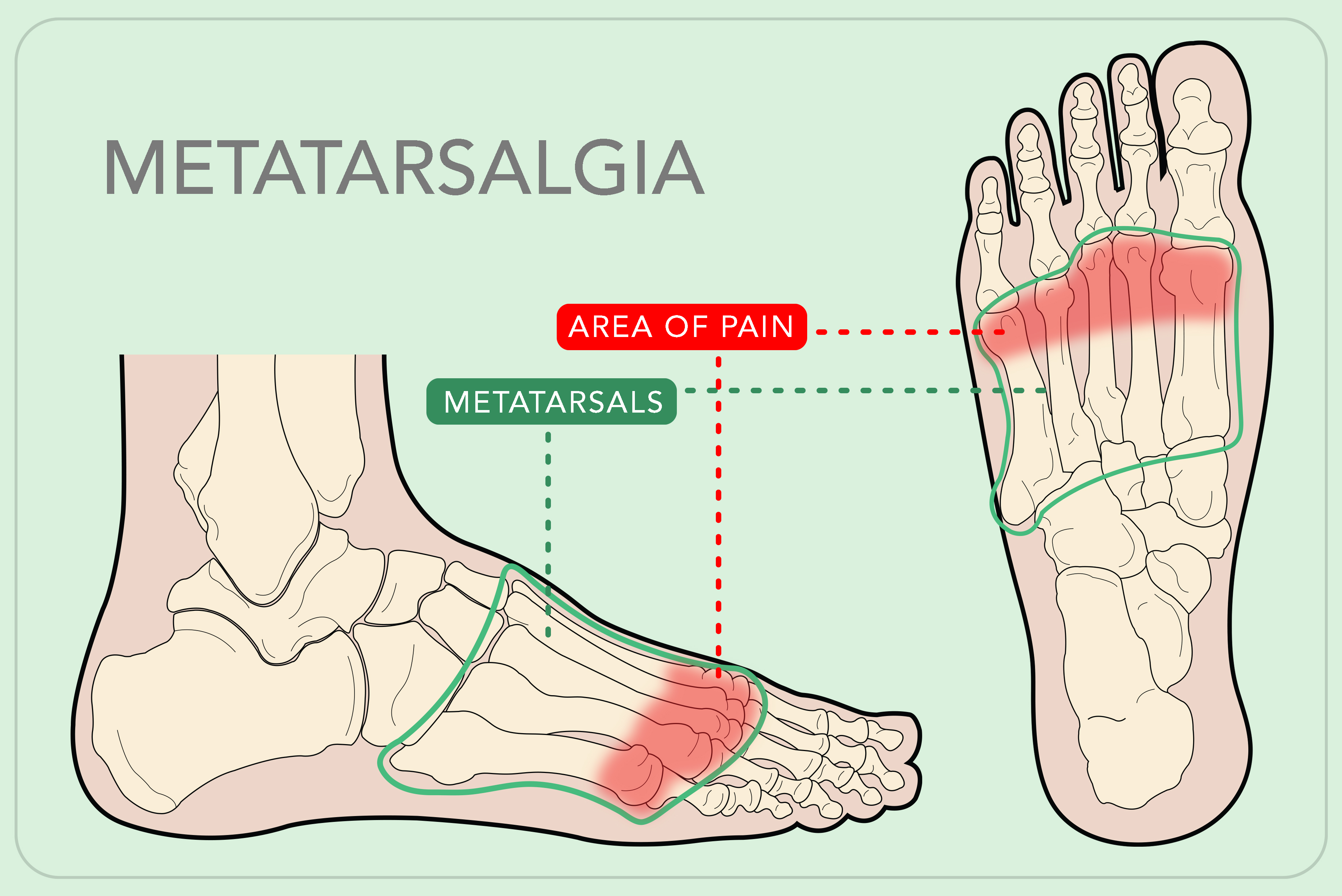Foot Talk Fridays : Metatarsalgia

Subtitle:
Welcome to Foot Talk Fridays!
Today we’re going to be talking about the Metatarsal area (pain in the ball of the foot, the forefoot).
Metatarsalgia of the feet happens in the forefoot or the ball of the foot and metatarsalgia means anything that gives you pain along this metatarsal region. So, in the hand we have metacarpals that are quite short, and in the foot we have metatarsals which are quite long. Now, these metatarsals are supposed to be arch-shaped in this kind of position here. The second, third and fourth should be raised a bit like a little rainbow, but commonly they fall forward. When they fall forward the peak of the arch can also drop, and this is what we call Metatarsalgia – it’s an umbrella term for pain anywhere in this area.
So, it can give problems with heel pain if the metatarsal has dropped down, it can cause problems with any of these muscles which can be stretched. It can also cause problems with the metatarsal arch here. Like I said these bones should be in that position up and raised, they shouldn’t be flat like this, or dropped down negatively.

If that does happen, in my opinion, (there are three metatarsal arches: the transverse metatarsal arch, the longitudinal arch and the lateral arch) this arch here is the most important that runs across from left to right behind the toes. If this arch drops it makes up this peak of this arch all the way underneath, so for me I always look for this arch to save the foot from any structural damage later on, so it is better to address this arch soon as soon as we see it dropping, or as soon as you get pain in the ball of your foot.
If that happens, firstly, we can take a gypsy cast of your foot. This area here (if you look at the side profile) looks like a little half an egg, and it depends how much your arches are dropped to see how much we lift that part of the arch of your foot so it can be small like this one, or it can be quite large. If it’s larger we can push it further back to lift the dome of your foot as well.
Also, sometimes we need to do some structural binding of the foot and that’s what we have all of these neuromuscular tapes or K-tape. These all have different strengths and different sizes and these are placed, for example, across the foot in a web position and that lifts and compresses the forefoot and lifts the middle portion up here, so that the metatarsals can all be aligned.
Also, something interesting with the nerves. The nerves have a double branch between the third and fourth toe, and this double branch of nerve can sometimes form a neuroma, or if all the metatarsals dropped down flat it can create neuritis which is inflammation of the nerves. Inflammation of the nerves is what we call Morton’s Neuritis and if you have a bundle of nerves (it is quite rare but it can happen) it is called Morton’s Neuroma and sometimes people called the Neuritis the Neuroma, but the Neuroma is quite rare.
What we would do for that is we would try and open up the space in between the bones by lifting this area (where I’m pointing to) and that opens up the space to give the nerves more space to talk to the toes, otherwise these toes can go numb.
So that’s what we do for Morton’s Neuroma, Morton’s Neuritis, collapsed transverse arch, Metatarsalgia. We use orthotics, foot binding and taping to constrict the foot as well, there’s also electro muscle stimulation that you can do to tighten these intrinsic muscles to keep the metatarsals in place also.
Enjoy your Friday!
For appointments and other queries:
Call: +971 4 3435390
WhatsApp: +971 50 331 4978







